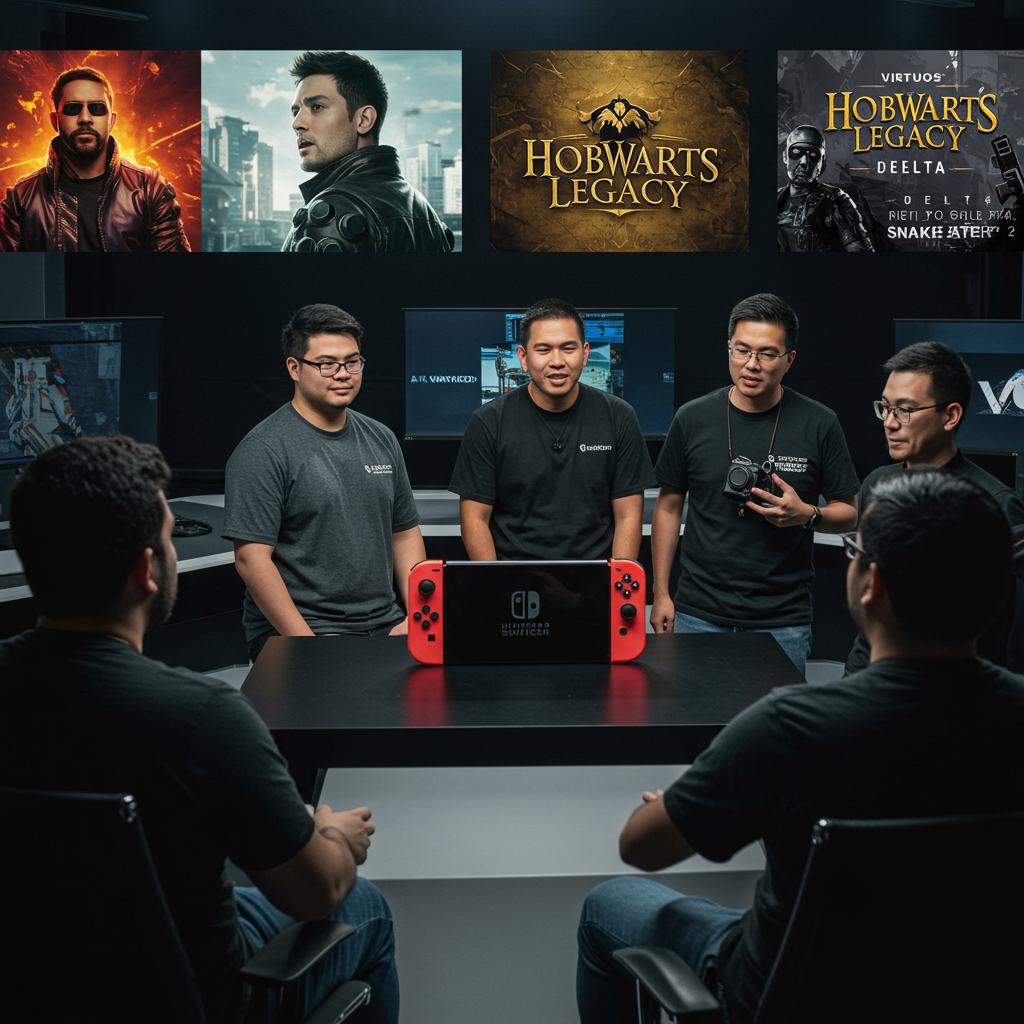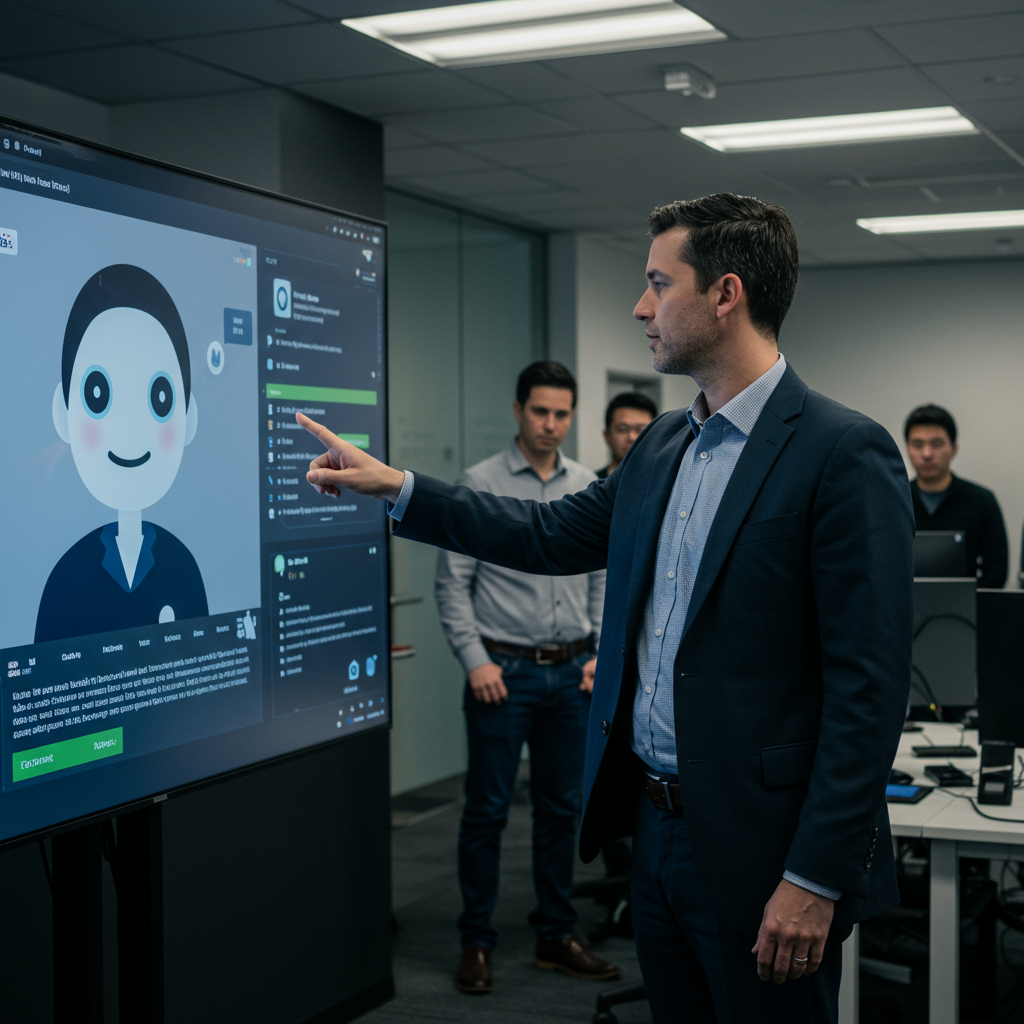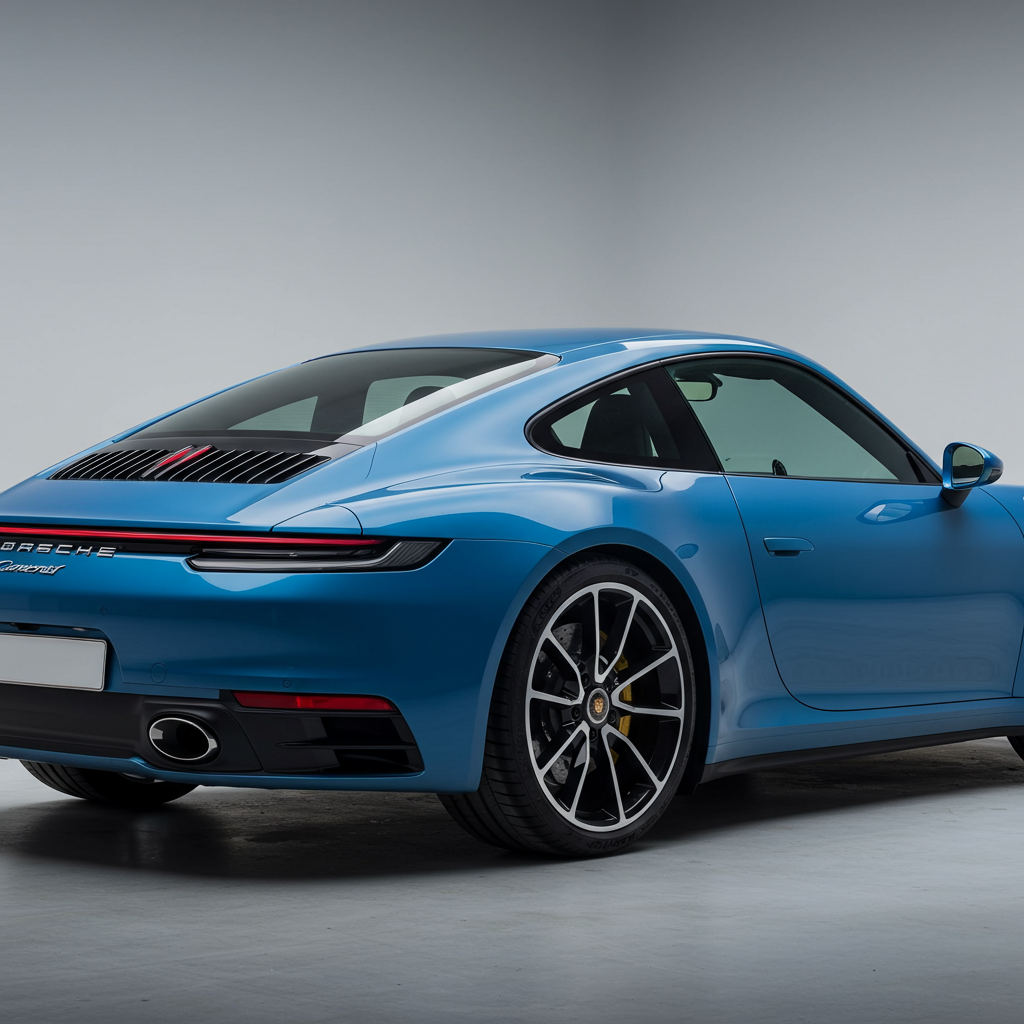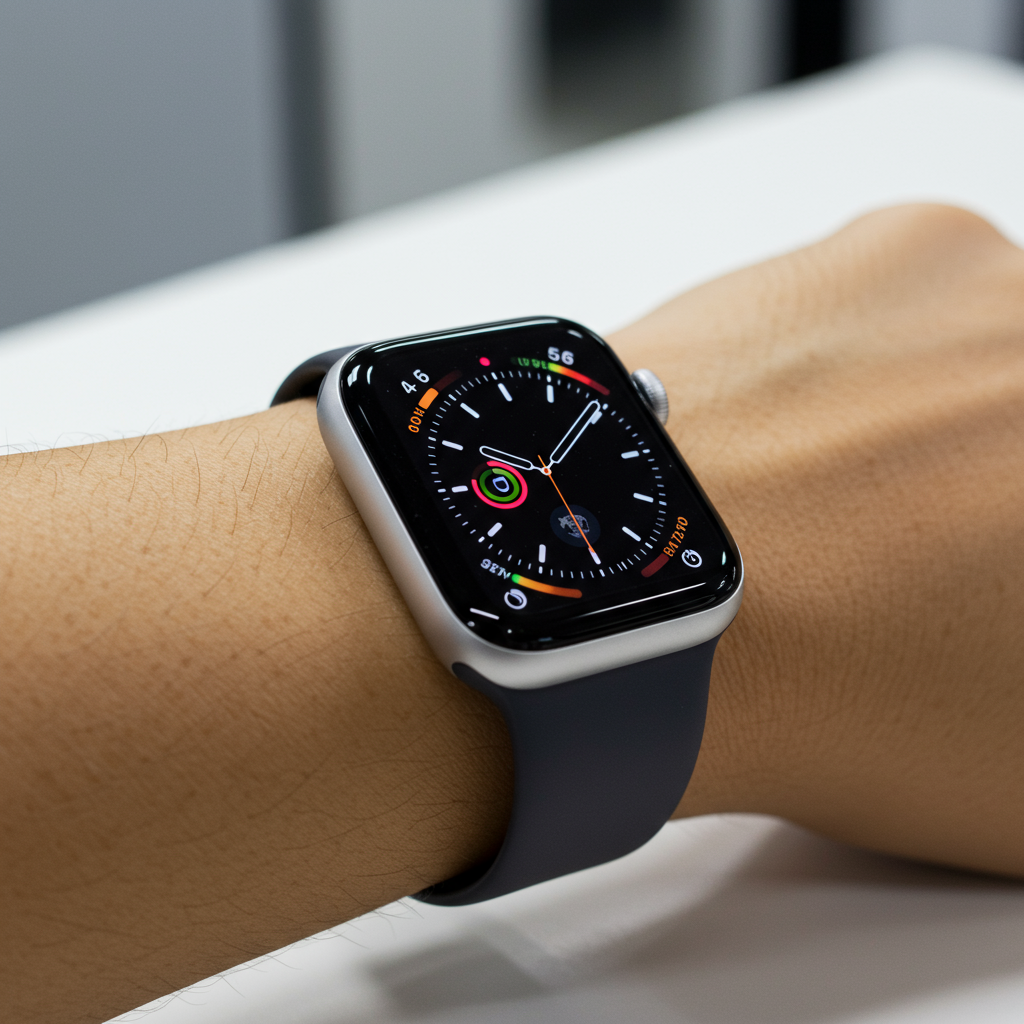The gaming world recently welcomed the highly anticipated Nintendo switch 2 console. Following its debut, which saw remarkable early sales figures, we spoke with key developers from game studio Virtuos. With over two decades in the industry, Virtuos is renowned for its work co-developing and porting major titles like Cyberpunk 2077, Hogwarts Legacy, and upcoming releases such as Metal Gear Solid Delta: Snake Eater. Our conversation aimed to capture their immediate impressions and technical insights into Nintendo’s latest hardware.
Our discussion featured Alex Heise, Director of Business Development at Virtuos North America, and Eoin O’ Grady, Technical Director at Black Shamrock, a Virtuos subsidiary known for contributions to games like Grounded and Kerbal Space Program 2. They shared valuable perspectives on the console’s surprising market performance, technical capabilities, innovative features, and what it means for game developers.
Shocking Launch Success and Market Momentum
Nintendo’s initial announcement that the Switch 2 sold over 3.5 million units in its first four days stunned many. This unprecedented pace immediately established it as the fastest-selling console launch in history for that timeframe. Virtuos developers, while expecting high demand given the original Switch’s popularity, admitted the exact scale of this early success was unforeseen.
Alex Heise noted that part of this success stems from the Switch 2 being Nintendo’s most iterative console leap since the NES to SNES transition. By branding it “Switch 2,” Nintendo strategically built upon a beloved, proven formula rather than introducing an entirely new concept like the Wii U. The value proposition is instantly clear to consumers: it’s a better Switch. Eoin O’ Grady added that the growing handheld gaming market, fueled by devices like the original Switch and Steam Deck, created fertile ground. Gamers increasingly want AAA experiences on the go, and the Switch 2 delivers this, combining Nintendo’s innovation with the flexibility modern players demand.
Furthermore, a critical factor was Nintendo’s seemingly effective supply chain management. Unlike previous console launches that faced severe shortages, Nintendo appears to have prepared extensively, adjusting manufacturing and securing partners to better meet the expected high demand. This preparation contrasted sharply with the difficulty many faced acquiring competing consoles at their respective launches. Despite this, pre-orders in some regions, notably the US and Canada, faced delays due to tariff uncertainties linked to assembly locations, adding a layer of market complexity before ultimately stabilizing. Reports from various retailers indicated pre-order stock sold out rapidly upon becoming available, highlighting intense consumer interest.
Enhanced Hardware and User Experience
First-hand experience with the Switch 2 reveals significant hardware refinements. Alex Heise, a day-one owner, highlighted the console’s premium build quality. It feels noticeably sturdier and more refined than its predecessor. A particularly welcome improvement is the new magnetic Joy-Con attachment mechanism. This updated design provides a more secure connection, significantly boosting durability and enhancing the overall user experience compared to the previous rail system. Across various user impressions, the screen also receives widespread praise, described as larger, brighter, and eliminating the perceived compromise of handheld mode on the original model. The device’s size and weight hit a ‘perfect balance’ for a handheld, feeling more substantial than the original Switch but less bulky than competitors like the Steam Deck. Minor hardware improvements like a much sturdier kickstand were also appreciated.
Software Polish and Digital Storefront
The software side also received notable upgrades, particularly the eShop. Both developers found the store dramatically faster and more responsive. The frustrating load times and navigation delays that plagued the original eShop are gone. Personalized recommendations, akin to those found on streaming services like Netflix or Spotify, are a fantastic addition. In an age where game discovery is challenging, these curated suggestions help players find titles they might enjoy based on their library. Autoplay trailers and images further enhance the browsing experience, drawing attention to games effectively. These improvements benefit both consumers looking for a smoother shopping experience and developers hoping their games stand out.
Performance Capabilities: Bridging Console Generations
A key technical question revolves around the Switch 2’s raw power. Eoin O’ Grady provided a detailed comparison. GPU-wise, the Switch 2 is slightly below the Xbox Series S, with a more pronounced difference in handheld mode. However, features like DLSS (Deep Learning Super Sampling), which the Switch 2 supports unlike the Series S, help close this gap in capable titles. CPU-wise, the Switch 2 sits closer to the PlayStation 4 but is slightly more powerful.
This configuration has implications for porting. Games that are primarily GPU-bound and run at 60 FPS on Series S should theoretically port easily. Even 30 FPS Series S games that are GPU-bound should translate well. The CPU difference becomes more relevant for games heavy on complex physics, AI, or intricate animations, potentially requiring extra optimization to hit target frame rates on the Switch 2. Nintendo’s own developers reinforced that enhanced processing capability was a primary focus for the Switch 2, providing a fundamental strength they believe enables entirely new gameplay experiences previously impossible on the original hardware.
DLSS, Ray Tracing, and Developer Adoption
The inclusion of NVIDIA DLSS Super Resolution was a highly anticipated feature. However, few launch titles fully leverage it. Eoin explained potential reasons. First, many first-party Nintendo games, like Mario Kart World or the anticipated Donkey Kong Bananza, feature stylized aesthetics and are designed to run smoothly (often targeting 60 FPS) without needing cutting-edge upscaling or graphical fidelity pushes. These games were often in development for years, some possibly starting with the original Switch’s capabilities in mind.
For third-party titles, integrating DLSS isn’t a simple drag-and-drop from PC versions. It requires specific implementation through Nintendo’s NVN2 graphics API. Developers might defer this extra work for initial ports to meet launch timelines, although titles like Cyberpunk 2077 have demonstrated successful DLSS integration on the platform. Developers are strongly encouraged to use DLSS, as it offers superior upscaling compared to alternatives and can significantly enhance the visual experience, especially for graphically demanding third-party ports.
Similarly, while the Switch 2 supports hardware-accelerated ray tracing, widespread implementation, particularly for global illumination, remains rare, even on more powerful consoles like Series X and PS5 due to performance costs. Eoin noted that the Switch 2 has less ray tracing power than the Series S, and DLSS may not fully compensate for this gap for demanding effects like global illumination. However, ray tracing remains highly viable and useful for reflections and shadows across platforms, including the Switch 2, where it can deliver noticeable visual improvements at reasonable performance costs. Developers should focus its application strategically on these less demanding effects.
Innovative Controller Mechanics
Nintendo’s controllers continue to be a hallmark of their innovation. Eoin O’ Grady emphasized that the Switch 2’s expanded controller features truly distinguish it. The Joy-Con 2s retain their ability to act as motion controllers, gyroscopes, or split into two mini controllers. Crucially, they now function as intuitive mouse pointers. An optical sensor on each Joy-Con 2 allows it to act like a mouse when placed on a surface, a feature usable in both docked and handheld modes.
The developers stressed that studios porting games must avoid treating the Joy-Con 2s as just standard controllers. Leveraging the unique capabilities is key to creating memorable Switch 2 experiences. Mouse control should be considered for first-person shooters, motion tracking where it enhances gameplay, and support for split mini controllers should be standard in multiplayer titles. Developers must also account for the specific ergonomics and stick layout during testing to ensure optimal sensitivity and precision for players.
The Promise of GameChat
The introduction of GameChat is poised to significantly boost social engagement on the Switch 2. Alex Heise sees it as a vital step, providing a more secure, platform-controlled environment particularly beneficial for younger players and their families. Essential modern social features like seeing what friends are playing and easy joining are now seamlessly integrated. While it builds on the trend set by platforms like Discord, GameChat brings these features directly into the core console experience. In-game video adds an engaging layer, though it requires a camera setup.
Eoin O’ Grady believes GameChat is an absolute win for co-op gaming. It enhances the social element for streamers and viewers alike. Currently limited to on-platform friends, its potential could be unlocked further if Nintendo were to integrate with popular streaming platforms like Twitch or YouTube, a step only Nintendo can take. If paired with compelling multiplayer titles, GameChat could truly revolutionize social play within the Nintendo ecosystem.
Development Philosophy and Future Potential
Nintendo’s internal development philosophy, as shared by their own teams, reveals that the Switch 2 project formally began around 2019, building on research that started even earlier. Their primary motivation was addressing the original Switch’s processing limitations, which prevented developers from realizing increasingly ambitious gameplay ideas. The focus on significantly enhanced processing power was deliberate, intended to provide a robust foundation. Instead of burdening developers with entirely new, required hardware gimmicks for the base console, Nintendo opted to stick to the versatile core design (handheld, docked, detachable controllers) and enable unique experiences through optional accessories bundled with specific games, similar to Ring Fit Adventure. This approach allows the base hardware to support a wide range of titles while still offering avenues for novelty.
Early impressions suggest the console is capable of running enhanced versions of existing Switch games beautifully, with titles like The Legend of Zelda: Tears of the Kingdom noted as potentially running at higher resolutions and frame rates with crisper visuals. The emulation of retro titles also seems improved compared to the original Switch. While the new launch lineup was considered thin by some, featuring primarily Mario Kart World and the paid tech demo Nintendo Switch 2 Welcome Tour, anticipation is high for upcoming exclusives like Donkey Kong Bananza (set for July), Metroid Prime 4: Beyond, and potential new 3D Mario titles. The success of these key first-party games will be crucial in defining the Switch 2’s early library and showcasing its capabilities beyond enhanced backward compatibility. The high price point, particularly the $80 cost for new games, remains a consideration for potential buyers weighing the upgrade. Ultimately, while the hardware is strong, many potential buyers may choose to wait until the software library grows beyond the initial launch titles.
Frequently Asked Questions
How do Switch 2’s performance capabilities compare to Xbox Series S or PS4?
According to Virtuos developers, the Switch 2’s GPU is slightly less powerful than the Xbox Series S, especially in handheld mode, but technologies like DLSS help bridge this gap. CPU-wise, it’s closer to, and slightly more powerful than, the PlayStation 4. This positioning means well-optimized, GPU-bound games from the Series S should port relatively well, though CPU-intensive titles may require more optimization.
What makes the Nintendo Switch 2 controllers unique, especially the mouse function?
Beyond standard motion and gyro controls, the Joy-Con 2 controllers can split for multiplayer and feature a new optical sensor allowing them to function like a mouse when placed on a surface. This innovative feature, supported in games like Metroid Prime 4: Beyond and required for others like Drag x Drive, distinguishes them and offers new gameplay possibilities developers are encouraged to leverage.
Why did Nintendo focus on raw power over completely novel hardware features for Switch 2?
Nintendo’s internal development teams revealed they prioritized addressing the original Switch’s processing limitations. They wanted to enable more ambitious gameplay experiences that required greater power. Instead of forcing developers to build around entirely new, mandatory hardware gimmicks for the base console, they enhanced the core versatile Switch design and plan to offer unique interactions through optional accessories bundled with specific games, providing a stronger, more flexible foundation for all software.
Ultimately, the Nintendo Switch 2 represents a compelling evolution of a beloved formula. With significant hardware refinements, a faster eShop, promising technical capabilities bolstered by DLSS, and innovative controller features, it lays a strong foundation. While the launch lineup is a common point of discussion, the console’s record-breaking sales and high anticipation for upcoming titles signal immense potential. Developers are now tasked with fully exploring these capabilities to create experiences that truly leverage what the Switch 2 offers, ensuring it lives up to expectations and potentially surpasses the incredible legacy of its predecessor.




